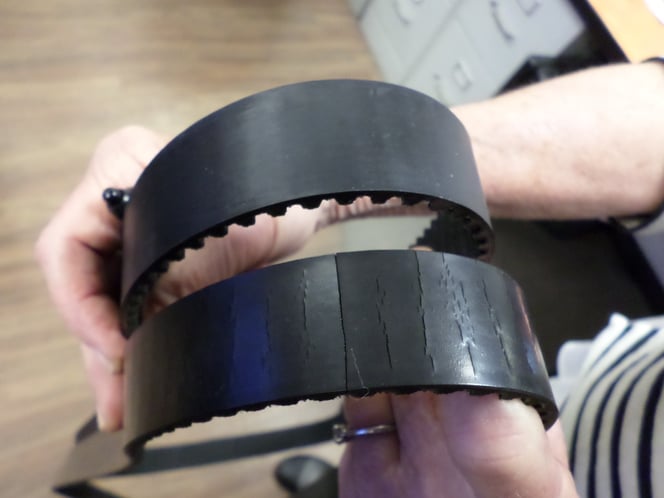Most light duty vehicle engines have a timing belt, though some have timing chains. The purpose of the timing belt is to time the movement of the valves with the pistons. For instance; on the intake stroke the intake valve opens while the piston moves down, sucking in an air/fuel mixture. Next the compression stroke as the piston moves up with all valves on that cylinder closed, compressing the air fuel mixture to about 1/10 of its original volume. Next the spark plug ignites the mixture creating the power stroke and pushing the piston downward. On its next trip back up, the exhaust valve opens, letting the burned gas be pushed into the exhaust system. In a 6 cylinder engine, this happens 6 times for every RPM.
If the timing belt were to break, the valves would stop moving with some in the open position and the momentum of the engine would keep the pistons moving up and down. This would in turn cause the valves to bend when they were hit by the pistons. Now instead of having to just replace the belt and some hardware, the cylinder head needs to be removed and a number of valves replaced, adding megabucks to the repair bill.

Not all engines will sustain this damage if the timing belt breaks. An engine that has no clearance between pistons and valves is an interference engine and one that does have clearance is a non-interference engine. Your vehicle owner's manual will recommend at what mileage the timing belt must be replaced. These intervals range from every 60,000 miles to every 105,000 miles. Our service department will be happy to look up your service history and your manufacturer’s recommendation for this service, Contact us here or call 303-691-9484.

The bottom line is if your car has an interference engine, get the timing belt replaced on time because it is not worth the risk of major engine damage as a result of waiting too long.



